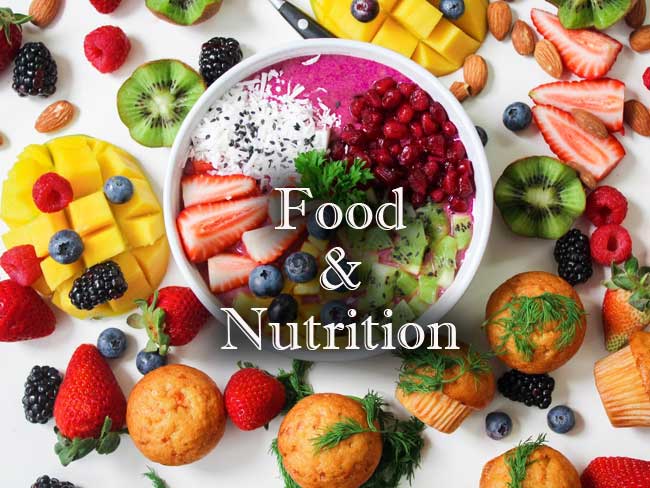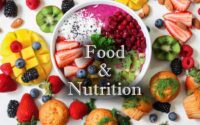Food and Nutrition Easy Question Papers
In this Article, we have provided the Food and Nutrition Easy Question Papers along with Solutions. So, the interested candidates who applied for jobs in Food and Nutrition can download Food and Nutrition Easy Question Papers for free of cost. Get all the Food and Nutrition Easiest Question Papers with just one click.

Click on the enclosed links below to download the Food and Nutrition Easy Question Papers. Check the Last five years Food and Nutrition Easy Question Papers to get a clear idea of the exam pattern. Along with Food and Nutrition Easy Question Papers, it’s better to refer Food and Nutrition Syllabus & Exam Pattern before starting preparation. So, click on link to check and download Food and Nutrition Easiest Question Papers PDF.
Easy Question Papers on Food and Nutrition
1. The most common nutrient deficiency in heavy drinkers is
(1) Vitamin B12 deficiency
(2) Thiamine deficiency
(3) Protein deficiency
(4) Calcium deficiency
2. Which one of the following is not a feature of marasmus ?
(1) Oedema
(2) Muscle wasting
(3) Shrivelled skin
(4) Decrease in immunity
3. The Recommended Dietary Allowances (RNA) for a nutrient is
(1) Estimated average requirement +1 SD
(2) Estimated average requirement + 2 SD
(3) Adequate intake + 1SD
(4) Tolerable upper intake level +2SD
4. Components of the National Vitamin-A Prophylaxis programme are
A. Providing supplementary nutrition
B. Distributing mega doses of vitamin-A
C. Feeding colostrum
D. Encouraging consumption of fruits and vegetables
E. All of the above
Codes :
(1) A,B,C
(2) E
(3) B,D
(4) B,C, D
5. What is the primary method of dietary assessment used in epidemiological studies ?
(1) Inventory method
(2) 24-hour recall method
(3) Diet history
(4) Food frequency questionnaire
6. The Fruit Product Order has been in force since
(1) 1935
(2) 1955
(3) 1975
(4) 1995
7. Which parameter is used to assess early stages of energy protein malnutrition in children ?
(1) Biochemical tests
(2) Anthropometry
(3) Pathological tests
(4) Biophysical tests
8. Keratomalacia is an indicator of
(1) Vitamin A deficiency
(2) Vitamin C deficiency
(3) Niacin deficiency
(4) Riboflavin deficiency
9. Dry and scaly skin disease in children is caused by the deficiency of which nutrient ?
(1) Vitamin D
(2) Essential fatty acids
(3) Essential amino acids
(4) Magnesium
10. Which of the following nutrients play an important role in the metabolism of homocysteine ?
A. Vitamin B6
B. Thiamine
C. Vitamin B12
D. Folic acid
E. Calcium
Codes : :
(1) B, C and E
(2) C, D and E
(3) A, C and D
(4) A,B and
11. Which of the following are not nutrient deficiency diseases ?
A. Xerophthalmia
B. Dyslipidemia
C. Osteomalacia
D. Keratomalacia
E. Anorexia Nervosa
Codes :
(1) A and C
(2) A and B
(3) B and E
(4) D and E
12. Gain in weight per gram of protein eaten is known as
(1) Protein efficiency ratio
(2) Net protein retention
(3) Protein digestibility-corrected amino acid score
(4) Biological value
13. A deficiency of which vitamin has been associated with enamel defects and increased risk of dental caries ?
(1) Vitamin A
(2) Folic acid
(3) Vitamin C
(4) Vitamin D
14. Arrange the progression of nutrition deficiency disorder :
A. Tissue changes
B. Anatomical changes
C. Dietary inadequacy
D. Sub-clinical changes
E. Biochemical changes
Codes:
(1) C, A, E, D and B
(2) C, D, A, E and B
(3) D, B, A, C and E
(4) E, B, C, D and A
15. When using bioelectrical impedance for measuring body composition, why does an electrical current travel faster through muscle than it does through fat ?
(1) Muscle contains less water than fat.
(2) Muscle contains more water than fat.
(3) Muscle weighs more than fat.
(4) Muscle weighs less than fat.
16. Name of the Genetic disorder in which excess copper accumulates in the body.
(1) Sickle cell disease
(2) Hemophilia
(3) Muscular dystrophy
(4) Wilson’s disease
17. Which one amongst the following is not a Millennium Development Goal ?
(1) Improve Maternal Health
(2) Combat HIV/AIDS, Malaria and other diseases
(3) Ensure Environmental Sustainability
(4) Develop a Local Partnership for Development
18. Increased protein is necessary in pregnancy for
(1) Preventing gestational diabetes
(2) Sparing carbohydrates for energy needs
(3) Growing maternal tissues
(4) Preventing pregnancy-induced hypertension
19. Adequate folate intake in the periconceptional period helps to prevent which of the following ?
(1) Cretinism
(2) Mental retardation
(3) Neural tube defects
(4) Gestational diabetes
20. Pulses are deficient in which essential amino acid ?
(1) Methionine
(2) Phenylalanine
(3) Valine
(4) Lysine
| Practice Papers | Quiz |
| Easy Question | Previous Question |
| Difficult Question | Sample Papers |
| Important Question | Model Papers |
| GK | Food Safety |
| MCQs |
21. To reduce the risk of complication of heart disease, the systolic and diastolic blood pressure should be
(1) <90 mmHg and <135 mmHg
(2) <1385 mmHg and <90 mmHg
(3) <80 mmHg and <120 mmHg
(4) <120 mmHg and <80 mmHg
22. The Atwater factors for available energy per gm for protein is
(1) 1.25 kcal/g
(2) 5.4 kcal/g
(3) 4.1 kcal/g
(4) 4.0 kcal/g
23. The person who has had a renal transplant should control intake of which of the following nutrients ?
(1) Carbohydrates
(2) Proteins
(3) Fats
(4) Vitamins
24. Long periods of parenteral nutrition is not recommended because
(1) It increases the toxicity of blood.
(2) It puts pressure on the kidney.
(3) It puts pressure on the heart.
(4) It causes the Gastro-Intestinal tract to degenerate.
25. In cases of muscle fatigue, which of the following vitamins should be taken ?
(1) Vitamin A
(2) Vitamin D
(3) Vitamin E
(4) Vitamin K
26. Which of the following groups of amino acids are all essential amino acids ?
(1) Leucine, methionine and threonine
(2) Proline, tyrosine and serine
(3) Valine, glycine and arginine
(4) Leucine, cysteine and glycine
27. All babies lose weight after birth, you should be concerned when
(1) Weight loss is 5%.
(2) Weight loss is < than 10%.
(3) Birth weight is not regained by day 7.
(4) Weight loss is > than 10% or birth weight is not regained by day 14.
28. What endogenous substrate source provides the most energy during moderate to high intensity exercise ?
(1) Liver glycogen
(2) Muscle glycogen
(3) Intramuscular lipid
(4) Adipose tissue lipid
29. The best known enhancers of iron absorption in the body are
A. Ascorbic acid
B. Folic acid
C. Lactoferrim
D. Polyphenols
Codes :
(1) A, C
(2) B, C
(3) B, D
(4) A, D
30. The amount of energy available to the body after burning of a food in the body is termed as
(1) Physiological fuel value of food
(2) Heat of combustion
(3) Bomb calorimeter value
(4) Gross calorific value
31. The major form of Vitamin K found in green plants is called
(1) Phyloquinone
(2) Menaquinone
(3) Polyphenols
(4) Ubiquinone
32. To avoid gastric upsets, iron supplement should be taken
(1) Between two meals
(2) With large amount of water
(3) With meals
(4) In very small doses
33. In considering drug-nutrient interaction, which of the following nutrients is not considered when using diuretics ?
(1) Vitamin D
(2) Vitamin C
(3) Potassium
(4) Vitamin B6
34. Fat-soluble vitamin involved in blood coagulation is
(1) Vitamin K
(2) Vitamin A
(3) Vitamin D
(4) Vitamin E
35. Who is known as the father of nutritional sciences of India ?
(1) M.S. Swaminathan
(2) Varghese Kurien
(3) A. Laxmaiah
(4) Coluthur Gopalan
36. Fruits and vegetables are potent sources of
(1) Saturated fat
(2) Antioxidants
(3) Free radicals
(4) Proteins
37. Non-digestible food ingredients that stimulate the growth and activity of certain bacteria in the colon are called
(1) Insoluble fibre
(2) Probiotics
(3) Prebiotics
(4) Cellulose
38. Which of the following statements is false about nutrients in milk ?
(1) Milk is a good source of calcium.
(2) Milk is a good source of protein.
(3) Milk is a good source of iron.
(4) Milk is a good source of vitamin D.
39. Safe protein requirements for healthy Indian adults as per report of the expert group of the ICMR-NIN 2020 is
(1) 0.78 g/kg/day
(2) 0.83 g/keg/day
(3) 1.00 g/kg/day
(4) 1.08 g/kg/day
40. The fat-soluble antioxidant synthesized in the body is
(1) Lecithin
(2) a-tocopherol
(3) Glutathione
(4) Co-enzyme Q10
41. Honey contains which of the following sugars ?
(1) Maltose
(2) Fructose
(3) Lactose
(4) Levulose
42. Vitamin D3 is synthesised photochemically by the action of sunlight from which precursor ?
(1) Alfacalcidol
(2) 6-dehydrocholesterol
(3) 7-dehydrocholesterol
(4) Ergocalciferol
43. Identify the name of the unsaturated fatty acid.
(1) Lauric
(2) Myristic
(3) Oleic
(4) Butyric
44. As per the Indian Food Composition Tables (NIN-2017), foods have been categorized into the following number of food groups :
(1) Twenty
(2) Seventeen
(3) Five
(4) Four
45. Jones factor for conversion of egg nitrogen to protein is
(1) 6.38
(2) 6.25
(3) 5.83
(4) 5.71
46. The group of plant pigments that are precursors of vitamin A are called
(1) Carotenoids
(2) Retinol
(3) Retinaldehyde
(4) α-carotene
47. Which of the following vitamins is a precursor of a hormone ?
(1) Vitamin A
(2) Vitamin C
(3) Vitamin D
(4) Vitamin K
48. Which is another name for cynocobalmin ?
(1) Vitamin B6
(2) Vitamin B12
(3) Vitamin B1
(4) Vitamin B2
49. Which of the following is the sweetest among naturally occurring sugars ?
(1) Glucose
(2) Lactose
(3) Sucrose
(4) Fructose
50. Principal protein in milk is –
(1) Albumin
(2) Lactalbumin
(3) Casein
(4) Lactoglobulin

